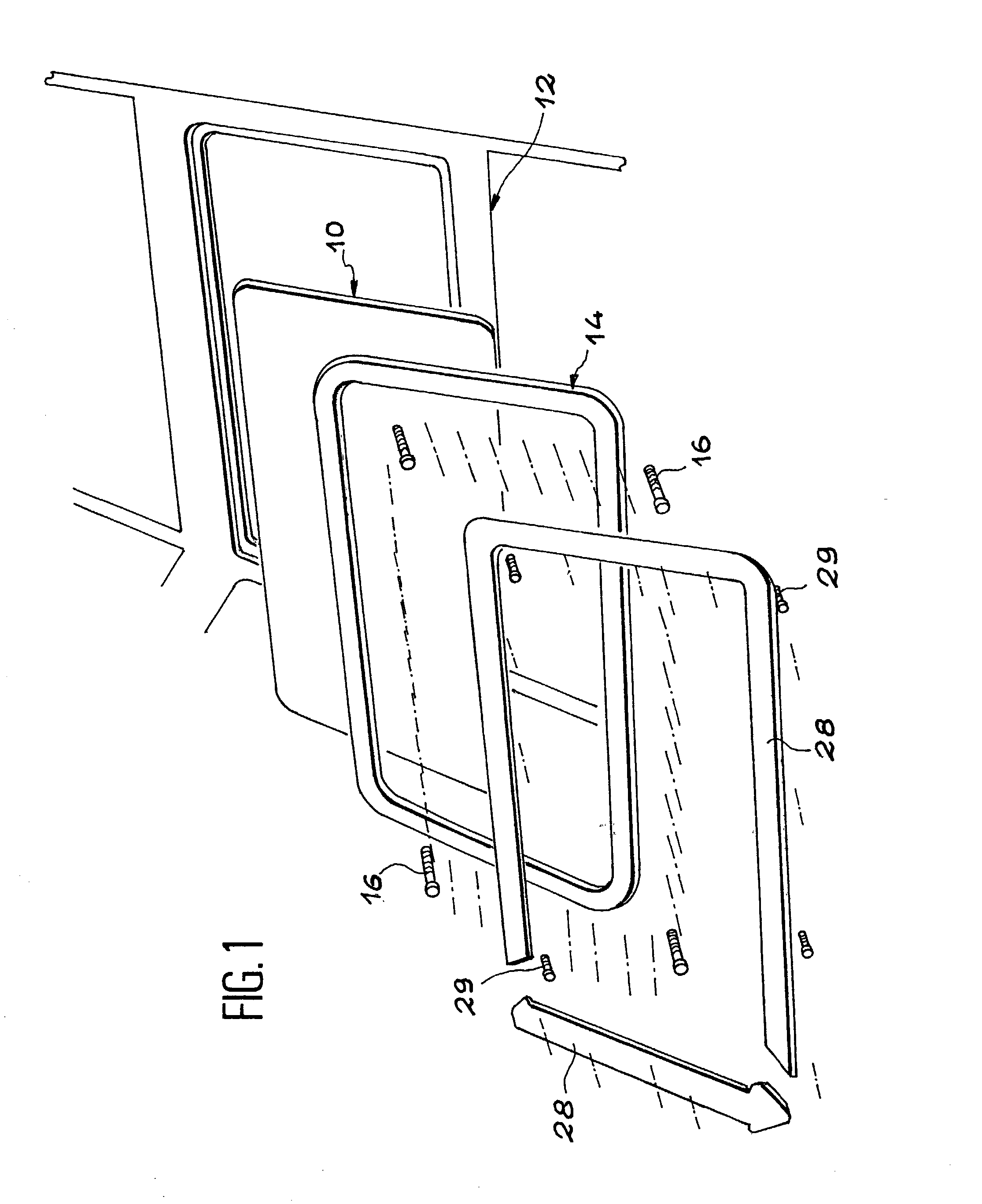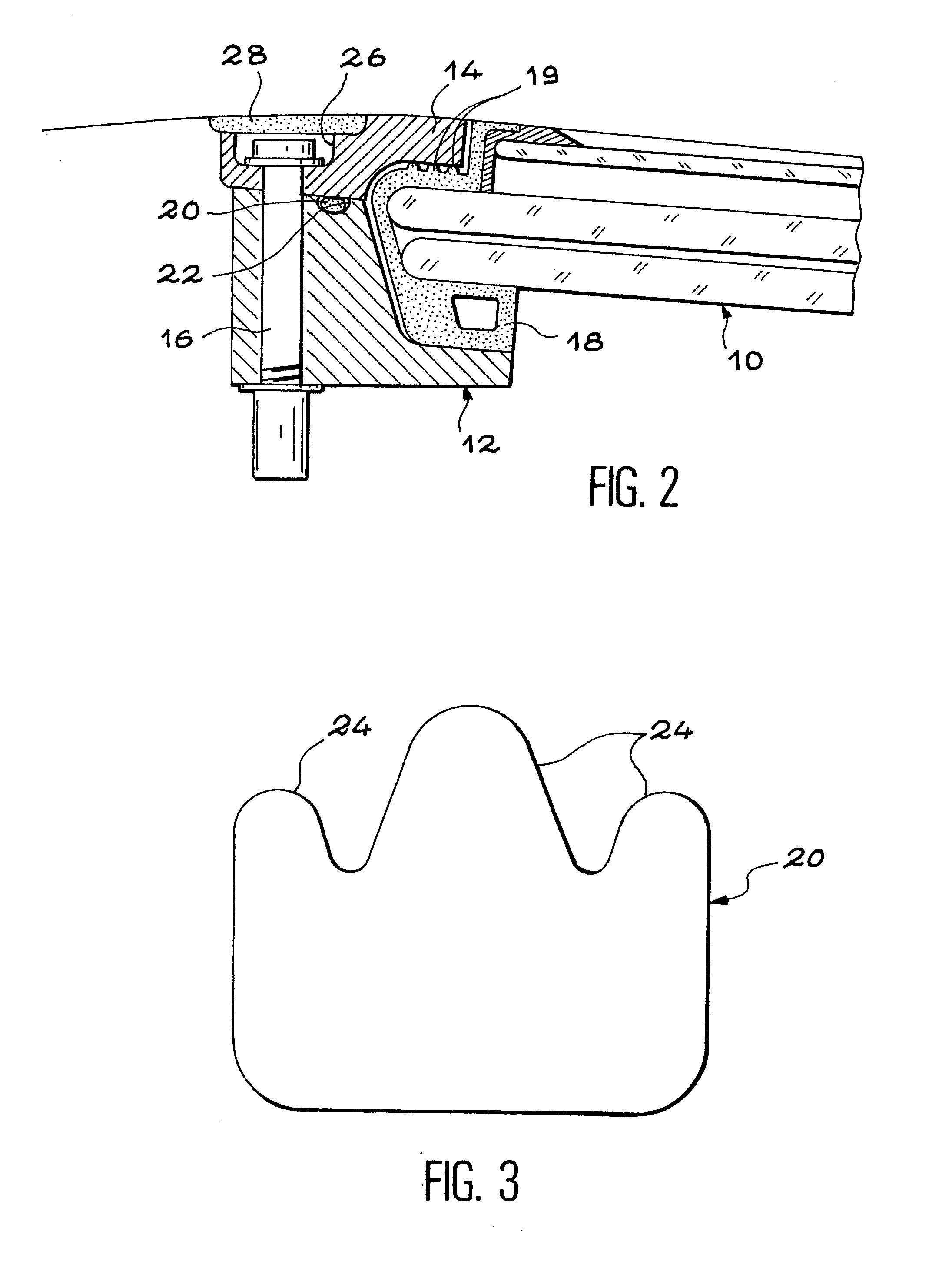This known technique has the
disadvantage that the attachment screws apply mechanical constraints to the windshield which causes risks of breaking it.
These constraints may in particular be due to deformations of the aircraft structure under extreme flight conditions, and to the difference in expansion between the windshield glass, the flanges, and the
metal structure when the temperature changes while the aircraft is in the
climb and descent phases.
However, each of these two techniques have other disadvantages which will be described below.
These screws are chosen because their heads do not project outside the
fuselage, which could degrade the aerodynamic performances of the aircraft.
This requires very high
machining precision, resulting in a high manufacturing cost.
Furthermore, despite precautions taken while
machining the holes, it is possible that at least one of the holes has a slight alignment defect.
Furthermore, depending on the placement conditions and particularly the temperatures of the different parts of the
assembly, it is possible that there are different expansion movements between the flanges and the aircraft structure which can cause alignment problems for some holes.
In this case, the
screw head cannot fit correctly into the conical part of the flange provided to hold it.
This interstice enables
moisture to enter between the screw and the flange, which could cause
corrosion of the aircraft structure and / or seizure of the screw, making subsequent disassembly of the windshield difficult.
Furthermore, screws with heads that do not fit perfectly into the conical ends of holes form preferred points of
impact for
lightning strikes.
If
lightning strikes one of the screws, severe damage is often caused to the aircraft, such as damage to the structure or the flange.
Other disadvantages of known techniques for attachment of aircraft windshields relate to the difficulty in disassembling the windshield when it has to be replaced, which is usually necessary several times during the life of an aircraft.
A first
disadvantage is due to the fact that PR mastic bonds very strongly onto the surfaces to which it is applied.
Therefore disassembly of the different parts joined by this mastic is particularly difficult.
The mastic must be
cut with tools such as scrapers, which are inconvenient to use for personnel and there are disadvantages for the aircraft structural elements.
Furthermore, the risk of degrading the quality of the work done is increased if inappropriate tools are used.
Another disadvantage that occurs during disassembly applies to removal of the screws.
This risk is increased for screws that fit into holes that are not aligned as described above.
In this case, screws are even more difficult to remove if they are driven by a screwdriver, since with a screwdriver it is impossible to apply a torque as high as would be desirable to unscrew them.
Furthermore, repeated sliding of the screwdriver on the
screw head, which occurs frequently when there is a seizure phenomenon, frequently damages the
screw head which makes unscrewing even more difficult.
Furthermore, this sliding can cause the screwdriver to slip and possibly damage the flange or the structure of the aircraft.
This choice of a screwdriver on the maintenance site can cause a loss of time and consequently an increase in the cost of replacing the windshield.
The above disadvantages are applicable to disassembly of a windshield and also increase the disassembly time.
This is a nuisance for the airline company since the aircraft is then unavailable and therefore unproductive.
The penalizing nature is even worse if the windshield must be replaced during an aircraft stopover since it causes a
delay for the passengers or even a cancellation of the flight.
If this
delay is long, passengers then have to be provided with
accommodation which can sometimes cause problems with space, particularly if there is a large number of transported passengers.
Other disadvantages of known techniques for attachment of aircraft windshields are related to the use of PR mastic to make them leak tight.
This once again increases the time during which the aircraft is immobilized and the resulting disadvantages.
This can sometimes cause procurement problems on maintenance sites.
 Login to View More
Login to View More  Login to View More
Login to View More 


